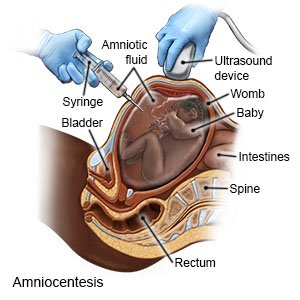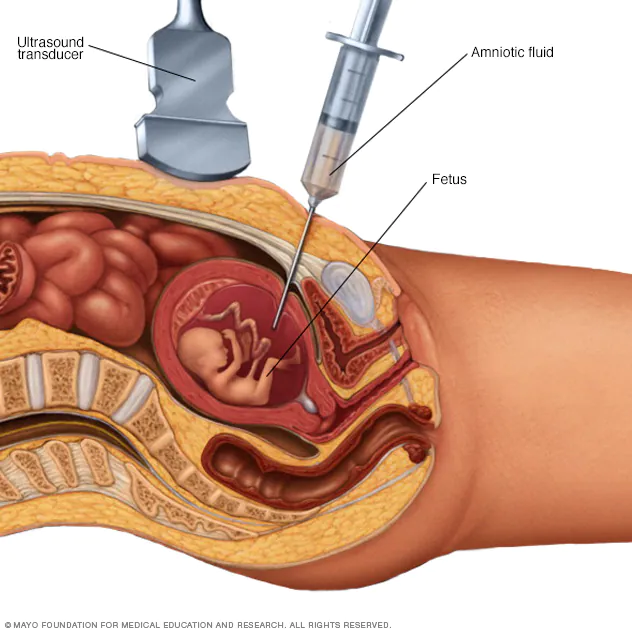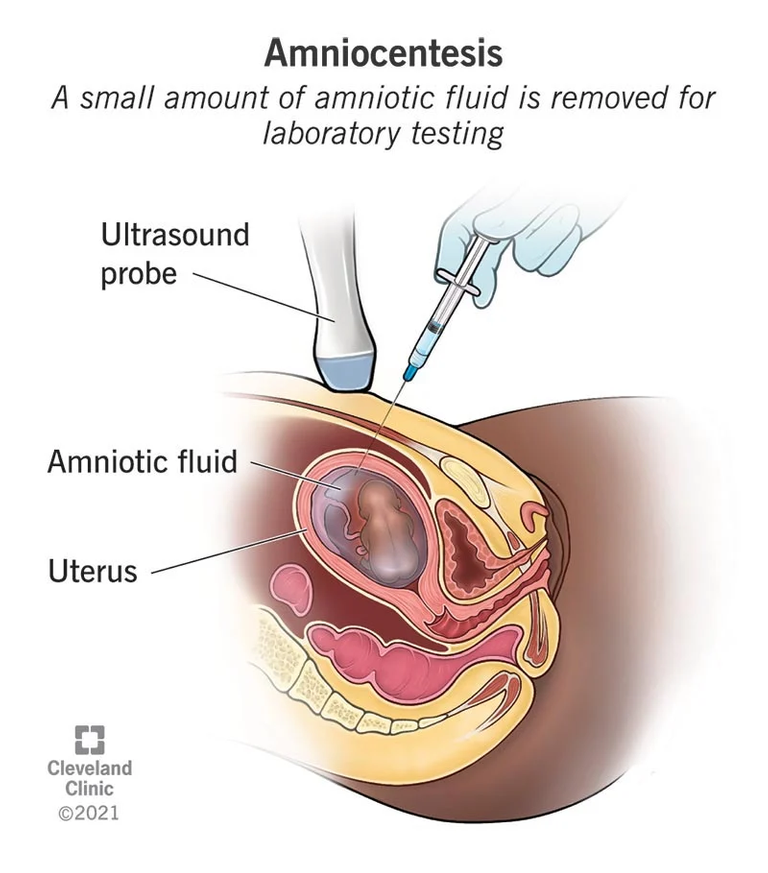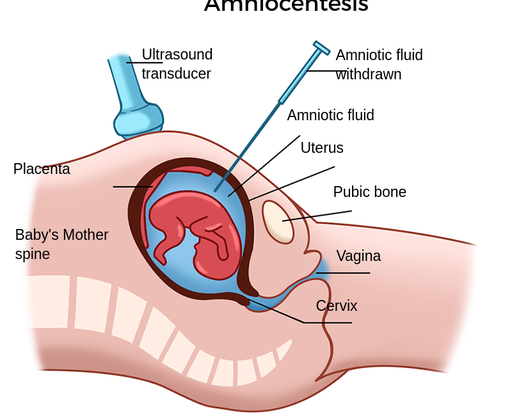Amniocentesis: Purpose, Procedure, Risks, Recovery & Results
Pregnant women have a lot of decisions to make. One of the most important decisions is whether or not to have amniocentesis. Amniocentesis is a diagnostic test that can detect chromosomal abnormalities, such as Down syndrome, as well as neural tube defects, such as spina bifida.
The test is usually performed during the second trimester, between the 15th and 20th week of pregnancy. It involves insertion of a needle through the abdominal wall into the uterus to withdraw a small amount of amniotic fluid. The fluid is then analyzed for the presence of genetic abnormalities. Although the test is considered to be safe, there is a small risk of complications, such as miscarriage.
Therefore, it is important for women to be informed about the risks and benefits of amniocentesis before making a decision. This article provides an overview of the test, including its purpose, risks, and benefits.
Why is Amniocentesis performed
Amniocentesis is a medical procedure that is used to diagnose genetic disorders in a developing baby. It is usually performed during the second trimester of pregnancy, and involves inserting a needle into the amniotic sac to collect a sample of the amniotic fluid. This fluid contains the baby's cells, which can be used to test for certain genetic conditions.
Amniocentesis is usually only performed if there is a specific reason to believe that the baby may have a genetic disorder. For example, if the mother is over the age of 35, if there is a family history of genetic disorders, or if the mother has had a previous child with a genetic disorder. Amniocentesis is not a routine test, and not all women will need to have it.
How is Amniocentesis Performed?
Amniocentesis is a medical procedure that is used to collect a sample of amniotic fluid from the womb. This fluid is then tested for genetic disorders, such as Down syndrome.
The procedure is usually performed during the second trimester of pregnancy, and it is considered to be very safe. However, as with all medical procedures, there are some risks involved.
During the procedure, a needle is inserted into the womb through the abdomen. The needle is then used to collect a sample of amniotic fluid. The fluid is then sent to a lab for testing.
Amniocentesis is considered to be a very safe procedure, but there is a small risk of complications, such as infection or miscarriage.

Are There Any Risks Associated With Amniocentesis
While amniocentesis is generally a safe procedure, there are a few risks associated with it. These risks include infection, injury to the fetus, and premature labor. However, the risks of amniocentesis are typically very small, and the procedure is often considered to be worth the risk for the peace of mind it can provide.
What Are The Benefits of Amniocentesis
There are several benefits of amniocentesis. First, it can help parents make informed decisions about their pregnancy. If the test results come back positive for a genetic disorder, parents can choose to terminate the pregnancy or prepare for a child with special needs. Second, amniocentesis can help doctors plan for the delivery and immediate care of the baby. If a genetic disorder is detected, doctors can take steps to ensure that the safety of the child
What Are Some of the Things I Should Know Before Having Amniocentesis
If you're thinking about having amniocentesis, there are a few things you should know beforehand. Amniocentesis is a medical procedure used to detect birth defects in a developing baby. It's usually done during the second trimester of pregnancy, but it can be done earlier or later if needed.
The procedure itself is fairly simple. A needle is inserted into the womb and a small amount of amniotic fluid is removed. The fluid is then tested for abnormalities.
Amniocentesis is generally safe, but like any medical procedure, there are some risks involved. The most common complication is minor abdominal pain or cramping. There is also a slight risk of infection or bleeding.
Overall, amniocentesis is a safe and effective way to find out if your baby has any genetic abnormalities.
Where can I find more information about Amniocentesis:
Cleveland Clinic:
https://my.clevelandclinic.org/health/treatments/4206-genetic-amniocentesisNational Health Service:
https://www.nhs.uk/conditions/amniocentesis/National Library of Medicine:
https://www.ncbi.nlm.nih.gov/books/NBK559247/



Yes, Amniocentesis has some risks, but the benefit far outweighs the risks. Giving birth to a baby with life threatening genetic abnormalities can be traumatic to the mother and the family in general. It is best to detect it early through this test and take an informed decision than to detect it at birth.
Thanks so much for sharing.
Thank you so much for stoping by
Congratulations @zoestrong! You have completed the following achievement on the Hive blockchain and have been rewarded with new badge(s):
Your next target is to reach 20 posts.
You can view your badges on your board and compare yourself to others in the Ranking
If you no longer want to receive notifications, reply to this comment with the word
STOPTo support your work, I also upvoted your post!
Check out the last post from @hivebuzz:
Support the HiveBuzz project. Vote for our proposal!
This was a delightful read.
The point was really clear.
Amniocentesis is a procedure performed during the second trimester of pregnancy and it can be used to detect genetic abnormalities. The amniotic fluid is taken from the woman's uterus and analyzed.
Though risks exist, they are not much. It is also an optional test, especially if the woman is above 35 and has another baby with a genetic disorder.
Thank you @zoestrong
Very clear illustration.
Thank you so much duduu
You're welcome